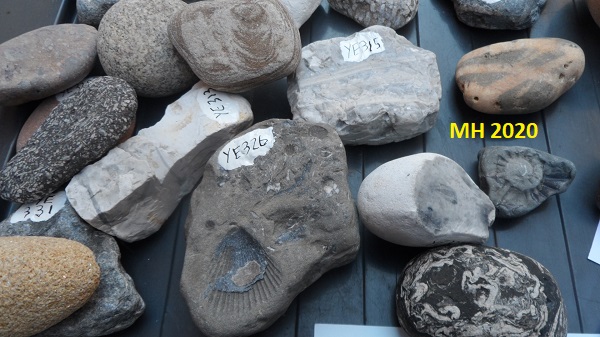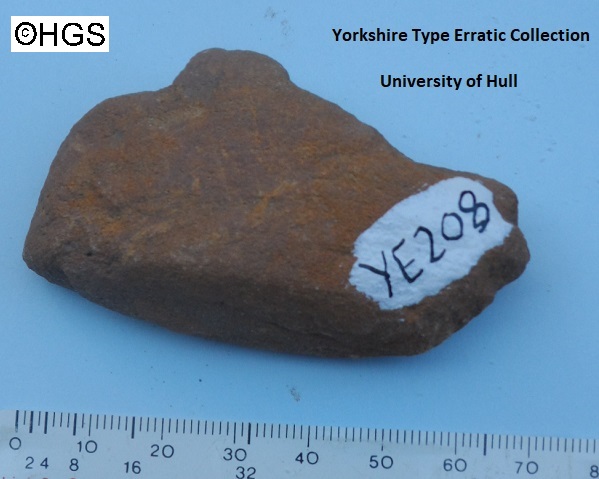
Welcome to the Ice Age Coast
The Yorkshire Type Erratics Collection
at the University of Hull
Geologists have been studying the erratics of Holderness for many years. The Hull Geological Society published its first Boulder Survey in 1893. There has never been a reference collection of the erratics that can been used by scientists for comparison with their own research. This project aims to start a collection at the Geology Department at the University of Hull, which can fulfill that role.

Geologists can visit the collection (by appointment), use the catalogue and request to view images of the specimens.
There are some limitations to this work, though. Of necessity the specimens in the collection cannot be too large, so rocks which exhibit large features may not be able to represented fully. There is a natural tendency for the geologists to collect the rocks they recognise. It is therefore not a randomized sample of rocks and will be enriched in the less common rock types.
The groups of rocks in the collection are -
-
Specimens from the Basement Till
-
Specimens from the Skipsea Till
-
Specimens from the Withernsea Till
-
Specimens collected off the beaches of Holderness
-
Specimens from earlier glaciations, collected from the Yorkshire Wolds
-
Specimens which are not glacial erratics (man made, building stones or introduced by man for sea defenses)
-
Specimens from earlier glaciations, collected from Lincolnshire and Norfolk
-
Specimens collected from the source areas of the erratics

The Lewis Penny Collection at the University of Hull, also contains erratics and other Quaternary specimens collected by Lewis Penny and his research students.
The specimens were photographed dry against a pale blue card background in dull daylight.
click here for the catalogue of the collection.
Descriptions of the Holderness erratics
note on the Scientific Study of Galcial Erratics
Acknowledgements.
I wish to thank Anne Horne, James Whittaker, Stephen Whittaker, Stuart Jones and Susan Lee for help with the fieldwork and donations.
(c) Mike Horne & Hull Geological Society 2021